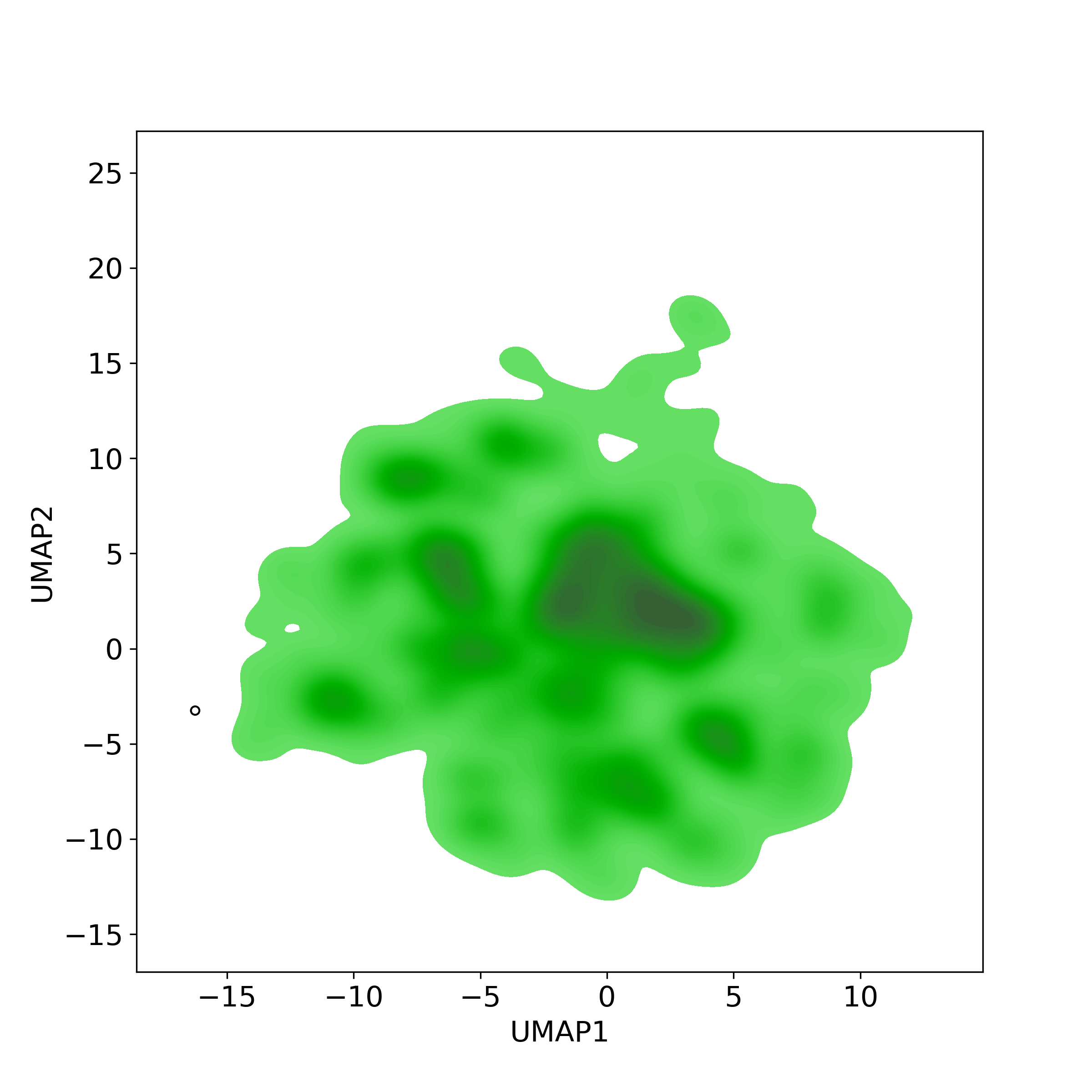 Natural Product: NPC246315
Natural Product: NPC246315
| Natural Product ID: | NPC246315 |
| Common Name*: | ANWGEPOASAJNOG-PLNGDYQASA-N |
| IUPAC Name: | n.a. |
| Synonyms: | |
| Standard InCHIKey: | ANWGEPOASAJNOG-PLNGDYQASA-N |
| Standard InCHI: | InChI=1S/C15H30O/c1-2-3-4-5-6-7-8-9-10-11-12-13-14-15-16/h4-5,16H,2-3,6-15H2,1H3/b5-4- |
| SMILES: | CCC/C=CCCCCCCCCCCO
|
| Synthetic Gene Cluster: |
n.a. |
| ChEMBL Identifier: |
n.a. |
| PubChem CID: |
5364635
|
| Chemical Classification**: |
-
CHEMONTID:0000000 [Organic compounds]
-
[CHEMONTID:0000012] Lipids and lipid-like molecules
-
[CHEMONTID:0003909] Fatty Acyls
[CHEMONTID:0001334] Fatty alcohols[CHEMONTID:0002951] Long-chain fatty alcohols
|
*Note: the InCHIKey will be temporarily assigned as the "Common Name" if no IUPAC name or alternative short name is available.
**Note: the Chemical Classification was calculated by NPClassifier Version 1.5. Reference: PMID:34662515.
 Species Source
Species Source
| Organism ID |
Organism Name |
Taxonomy Level |
Family |
SuperKingdom |
Isolation Part |
Collection Location |
Collection Time |
Reference |
| NPO28256 |
Platycladus orientalis |
Species |
Cupressaceae |
Eukaryota |
Leaves and branches |
Soorkesh Valley, Gollestan, Iran |
n.a. |
PMID[15104493]
|
| NPO28256 |
Platycladus orientalis |
Species |
Cupressaceae |
Eukaryota |
leaves |
Soorkesh Valley, Gollestan, Iran |
n.a. |
PMID[15104493]
|
| NPO28256 |
Platycladus orientalis |
Species |
Cupressaceae |
Eukaryota |
n.a. |
n.a. |
n.a. |
Database[TCMID] |
| NPO28256 |
Platycladus orientalis |
Species |
Cupressaceae |
Eukaryota |
n.a. |
n.a. |
n.a. |
Database[TCM_Taiwan] |
| NPO28256 |
Platycladus orientalis |
Species |
Cupressaceae |
Eukaryota |
n.a. |
n.a. |
n.a. |
Database[TM-MC] |
| NPO28256 |
Platycladus orientalis |
Species |
Cupressaceae |
Eukaryota |
n.a. |
n.a. |
n.a. |
Database[UNPD] |
☑ Note for Reference:
In addition to directly collecting NP source organism data from primary literature (where reference will provided as NCBI PMID or DOI links), NPASS also integrated them from below databases:
☉ UNPD: Universal Natural Products Database [PMID: 23638153].
☉ StreptomeDB: a database of streptomycetes natural products [PMID: 33051671].
☉ TM-MC: a database of medicinal materials and chemical compounds in Northeast Asian traditional medicine [PMID: 26156871].
☉ TCM@Taiwan: a Traditional Chinese Medicine database [PMID: 21253603].
☉ TCMID: a Traditional Chinese Medicine database [PMID: 29106634].
☉ TCMSP: The traditional Chinese medicine systems pharmacology database and analysis platform [PMID: 24735618].
☉ HerDing: a herb recommendation system to treat diseases using genes and chemicals [PMID: 26980517].
☉ MetaboLights: a metabolomics database [PMID: 27010336].
☉ FooDB: a database of constituents, chemistry and biology of food species [www.foodb.ca].
 NP Quantity Composition/Concentration
NP Quantity Composition/Concentration
| Organism ID |
NP ID |
Organism Material Preparation |
Organism Part |
NP Quantity (Standard) |
NP Quantity (Minimum) |
NP Quantity (Maximum) |
Quantity Unit |
Reference |
☑ Note for Reference:
In addition to directly collecting NP quantitative data from primary literature (where reference will provided as NCBI PMID or DOI links), NPASS also integrated NP quantitative records for specific NP domains (e.g., NPS from foods or herbs) from domain-specific databases. These databases include:
☉ DUKE: Dr. Duke's Phytochemical and Ethnobotanical Databases.
☉ PHENOL EXPLORER: is the first comprehensive database on polyphenol content in foods [PMID: 24103452], its homepage can be accessed at here.
☉ FooDB: a database of constituents, chemistry and biology of food species [www.foodb.ca].
 Biological Activity
Biological Activity
| Target ID |
Target Type |
Target Name |
Target Organism |
Activity Type |
Activity Relation |
Value |
Unit |
Reference |
☑ Note for Activity Records:
☉ The quantitative biological activities were primarily integrated from ChEMBL (Version-30) database and were also directly collected from PubMed literature. PubMed PMID was provided as the reference link for each activity record.
 Chemically structural similarity: I. Similar Active Natural Products in NPASS
Chemically structural similarity: I. Similar Active Natural Products in NPASS
Top-200 similar NPs were calculated against the active-NP-set (includes 4,3285 NPs with experimentally-derived bioactivity available in NPASS)
Similarity level is defined by Tanimoto coefficient (Tc) between two molecules. Tc lies between [0, 1] where '1' indicates the highest similarity. What is Tanimoto coefficient 
● The left chart: Distribution of similarity level between NPC246315 and all remaining natural products in the NPASS database.
● The right table: Most similar natural products (Tc>=0.56 or Top200).
| range |
Tanimoto Coefficient |
| 0-0.1 | 126 |
| 0.1-0.2 | 5119 |
| 0.2-0.3 | 21122 |
| 0.3-0.4 | 10608 |
| 0.4-0.5 | 4217 |
| 0.5-0.6 | 1019 |
| 0.6-0.7 | 392 |
| 0.7-0.8 | 88 |
| 0.8-0.85 | 2 |
| 0.85-0.9 | 2 |
| 0.9-0.95 | 0 |
| 0.95-1 | 2 |
| Similarity Score |
Similarity Level |
Natural Product ID |
 Chemically structural similarity: II. Similar Clinical/Approved Drugs
Chemically structural similarity: II. Similar Clinical/Approved Drugs
Similarity level is defined by Tanimoto coefficient (Tc) between two molecules.
● The left chart: Distribution of similarity level between NPC246315 and all drugs/candidates.
● The right table: Most similar clinical/approved drugs (Tc>=0.56 or Top200).
| range |
Tanimoto Coefficient |
| 0-0.1 | 143 |
| 0.1-0.2 | 4151 |
| 0.2-0.3 | 3702 |
| 0.3-0.4 | 916 |
| 0.4-0.5 | 171 |
| 0.5-0.6 | 49 |
| 0.6-0.7 | 16 |
| 0.7-0.8 | 2 |
| 0.8-0.85 | 0 |
| 0.85-0.9 | 0 |
| 0.9-0.95 | 0 |
| 0.95-1 | 0 |
| Similarity Score |
Similarity Level |
Drug ID |
Developmental Stage |

 Natural Product: NPC246315
Natural Product: NPC246315 Species Source
Species Source NP Quantity Composition/Concentration
NP Quantity Composition/Concentration Biological Activity
Biological Activity Chemically structural similarity: I. Similar Active Natural Products in NPASS
Chemically structural similarity: I. Similar Active Natural Products in NPASS
 Chemically structural similarity: II. Similar Clinical/Approved Drugs
Chemically structural similarity: II. Similar Clinical/Approved Drugs Bioactivity similarity: Similar Natural Products in NPASS
Bioactivity similarity: Similar Natural Products in NPASS



